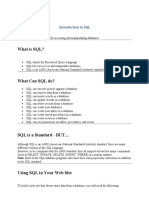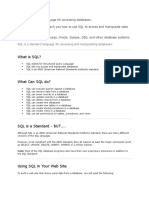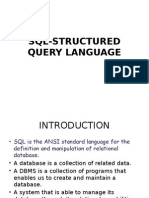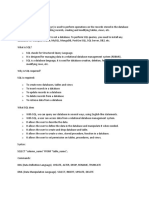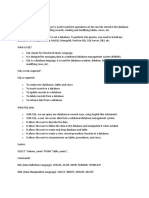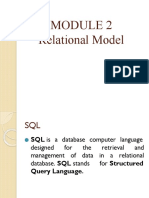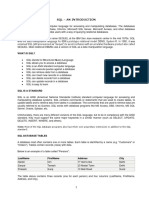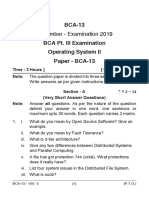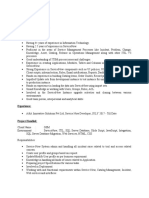0% found this document useful (0 votes)
140 views27 pagesSQL Basics for Database Beginners
SQL is a standard language used to manage data in relational database management systems. It is used to create, query, update and manipulate data in relational databases. The document discusses various SQL statements like DDL, DML and DCL which are used for data definition, manipulation and control. It also covers key concepts like SELECT statement, WHERE clause, ORDER BY, DISTINCT, operators and wildcards used in SQL queries. Microsoft SQL Server is a powerful RDBMS that uses SQL to create robust databases that can be accessed from various devices and provides tools for data analysis and reporting.
Uploaded by
Your HonorCopyright
© © All Rights Reserved
We take content rights seriously. If you suspect this is your content, claim it here.
Available Formats
Download as DOCX, PDF, TXT or read online on Scribd
0% found this document useful (0 votes)
140 views27 pagesSQL Basics for Database Beginners
SQL is a standard language used to manage data in relational database management systems. It is used to create, query, update and manipulate data in relational databases. The document discusses various SQL statements like DDL, DML and DCL which are used for data definition, manipulation and control. It also covers key concepts like SELECT statement, WHERE clause, ORDER BY, DISTINCT, operators and wildcards used in SQL queries. Microsoft SQL Server is a powerful RDBMS that uses SQL to create robust databases that can be accessed from various devices and provides tools for data analysis and reporting.
Uploaded by
Your HonorCopyright
© © All Rights Reserved
We take content rights seriously. If you suspect this is your content, claim it here.
Available Formats
Download as DOCX, PDF, TXT or read online on Scribd
/ 27






